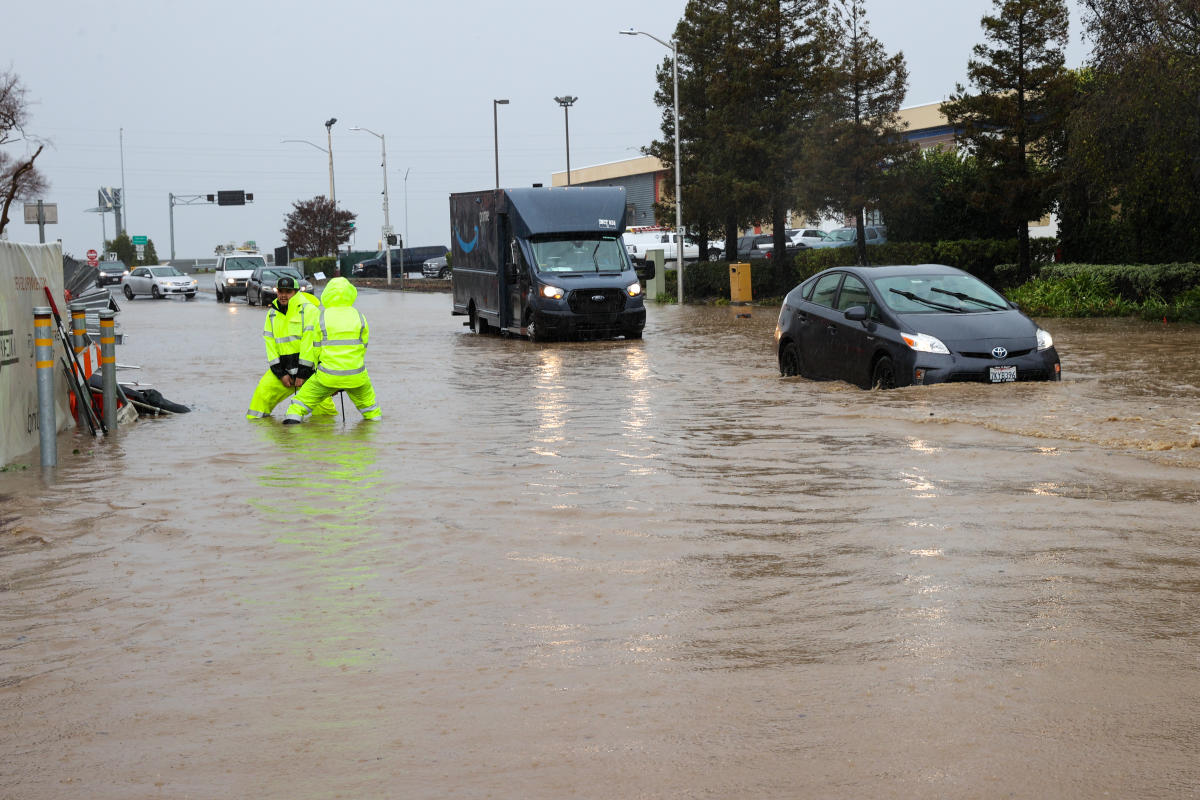
BERKELEY, Calif. — Northern California, already drenched in a historic storm on Saturday, began bracing for a second atmospheric river explosion expected to be unleashed Wednesday.
On December 31, San Francisco received 5.46 inches of rain, just 0.08 inches less than the all-time daily rainfall record set in 1994. The torrential downpour flooded streets and highways around the Bay Area, caused rivers and streams to overflow their banks and power was lost to more than 140,000 households.
While residents are still cleaning up, officials warned Wednesday’s storm was likely to be even worse. Propelled by a bomb cyclone — a rapid drop in atmospheric pressure that can fuel storms — round two of the atmospheric river will dump several more inches of rain onto the saturated ground and be accompanied by strong winds capable of knocking down trees.
The National Weather Service on Monday posted flood watches for the San Francisco Bay Area and surrounding counties.
Winds of between 20 and 40 mph are expected from the Bay Area to the Central Coast, with gusts of up to 70 mph, the National Weather Service said in a separate advisory Monday.
“People should avoid being outside in wooded areas and around trees and branches,” said a North Bay warning. “If possible, stay in the lower floors of your home during the storm and avoid windows.”
Another warning issued Monday by the National Weather Service’s Bay Area office pointed to the risks of the incoming storm.
“Simply put, this will likely be one of the most impactful large-scale systems this meteorologist has seen in a long time. The impacts will include flooding, road washes, collapsing hills, fallen trees (possibly full bushes), widespread power outages , immediate disruption to trade and worst of all, likely loss of life. This really is a ruthless system that we are looking at and should be taken seriously.”
State officials have made available 3.7 million sandbags to residents of areas most at risk from storm effects, the San Francisco Chronicle reported. The rain is expected to start raining around 4 a.m. on Wednesday and to continue through Thursday.

After enduring years of extreme drought, rain, though not at the rate at which it falls this week, is welcome across much of California.
“This will really help a lot with the short-term drought in Northern California, and maybe even eradicate the short-term drought,” UCLA climate scientist Daniel Swain said Tuesday in a YouTube forum with reporters. “But it will take a lot more to fully capture the long-term effects of several years, and in the wider context of the Colorado River Basin, this isn’t really going to do much.”
Swain co-authored a recent study that found that rising global temperatures due to fossil fuel burning have doubled the likelihood of a California megaflood due to a series of atmospheric riverine rains.
“We’re nowhere near that, and we’re probably not going there, but this is definitely one of the wetter, higher-impact periods we’ve seen in recent years,” Swain said on Tuesday.

